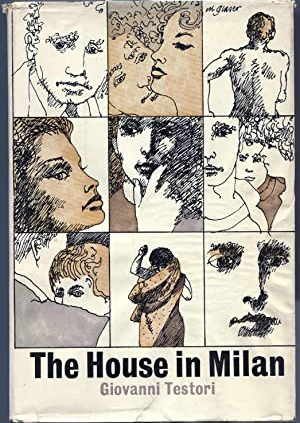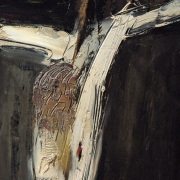A Milanese author
As I related in a previous article, I came away from a bancarella of second hand books in Milan with a volume by Giovanni Testori in my hand. “A Milanese author”, the bancarellista had simply told me. So who was Giovanni Testori?
Giovanni Testori (1923-1993) – the “Milanese author” – , was a man of many parts. As well as a creative writer, he was a painter, art historian and literary-cum-art critic. “Jack of all trades, master of none” is the stock reaction – not always a just one – to someone with a finger in too many pies. Yet Testori was an influential figure in Milanese life for many years. When I came to Milan he was still holding sway, but the artistic salons of higher Milanese society were one of the secrets the city withheld from me. The secrets of which Testori wrote in his best-remembered work – I segreti di Milano – were other ones, though. His subjects were the post-war working class and their daily struggle for existence in the smoggy outskirts of 1950s Milan.
A Milanese author
The fact that Testori was prolific in so many directions is probably responsible for the somewhat unruly appearance of his works to those approaching them for the first time. I segreti di Milano itself consists of two volumes of short stories, of which La Gilda di MacMahon, the one I found, is the second, followed by two plays and a novel. They were issued between 1958 and 1961. A further novel, found among his papers, was added to the sequence after his death. There are other novels and plays, as well as collections of poetry, but let me stay with the book I found in the bancarella. I segreti di Milano has been reissued by Feltrinelli, but only one of its six components has ever been translated into English – the novel Il Fabbricone, issued as The House in Milan in 1962. It’s long out of print, but a search on Amazon shows that a second hand copy may not be too hard to find. But what of La Gilda di MacMahon?
Squalid thoughts
The idea of a collection of short stories about Milanese life is an attractive one. Moravia’s Roman Tales are well known, even internationally. Sometimes irreverent and bawdy, they have an overriding good humour and sympathy that Moravia lost in his later works. Pratolini documented well, often memorably, the poorer classes of Florence. These two authors, though well aware of their characters’ inner lives, documented a city that was publicly visible. They are about people we could have met if we had been there at the time, about things we could have seen them doing. They expose the hidden motives below, of course, but Testori, as his title suggests, relates the thoughts and aspirations, sometimes squalid or perverse, that we would not have witnessed just by meeting these people in the local bar. I’ll talk about some specific stories in another article.
Christopher Howell 2020

 Collins
Collins
 William Congdon Foundation
William Congdon Foundation
